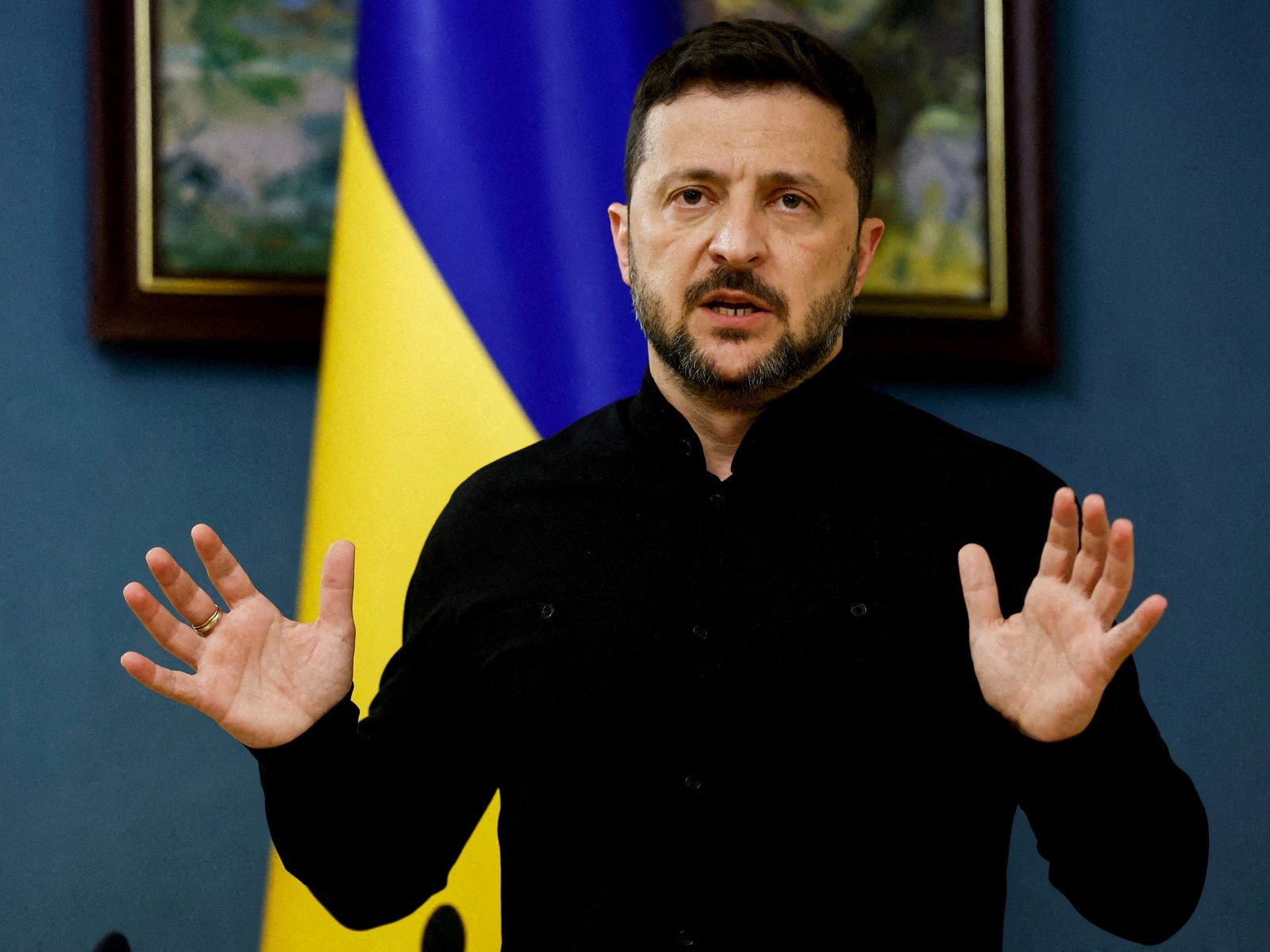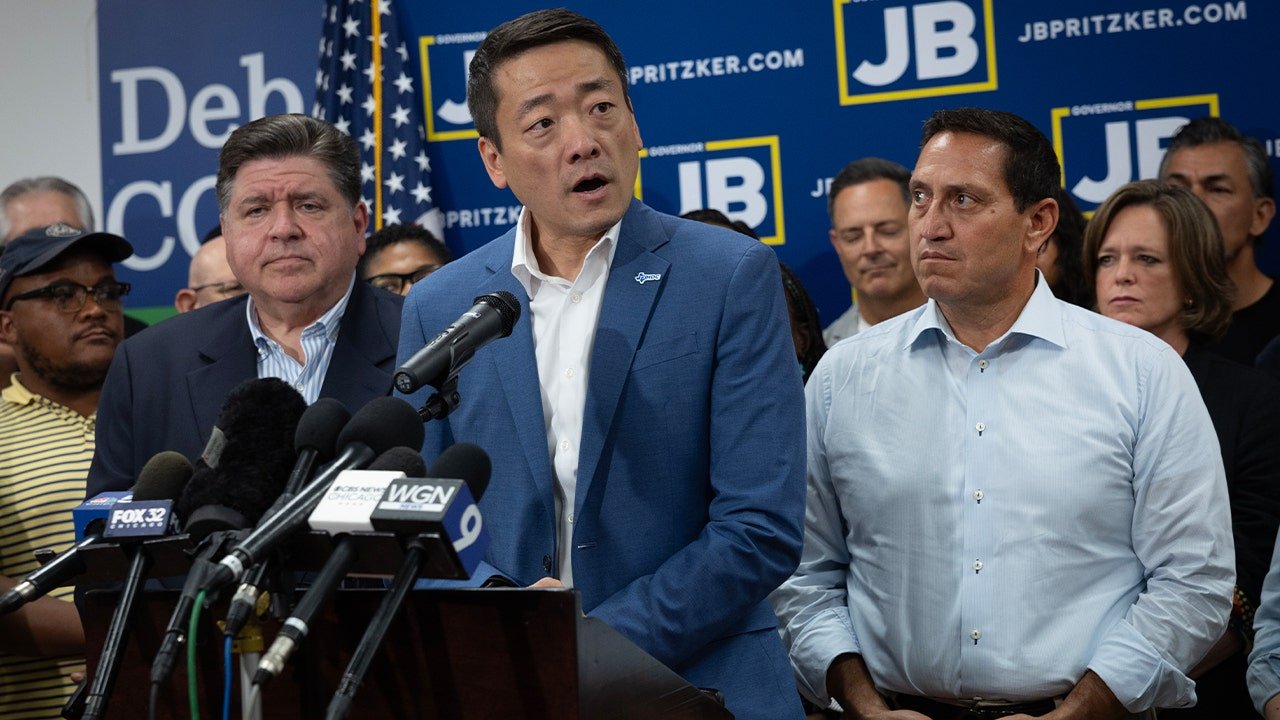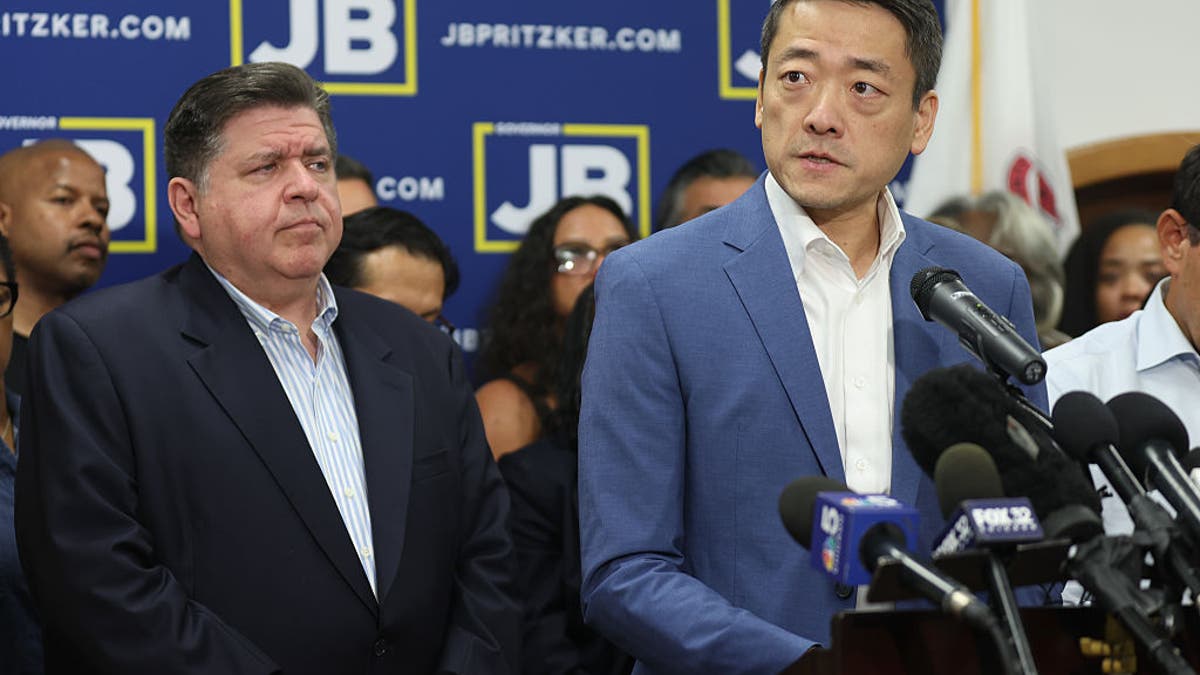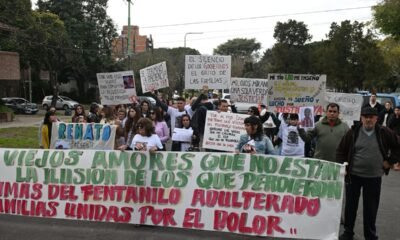INTERNACIONAL
Trump admin suspends lawyer in case of Maryland man mistakenly deported for failing to ‘zealously advocate’

The Trump administration has placed a Justice Department (DOJ) lawyer on leave for not «zealously advocating» its position in the case involving a Salvadoran man living in Maryland who was mistakenly deported last month.
Attorney General Pam Bondi’s office placed Erez Reuveni, who argued for the government, in Friday’s hearing in which a judge ruled Maryland father Kilmar Abrego Garcia must be returned to the U.S. by Monday, on indefinite paid leave, Fox News has learned.
«At my direction, every Department of Justice attorney is required to zealously advocate on behalf of the United States,» Bondi told the New York Times in a statement. «Any attorney who fails to abide by this direction will face consequences.»
Fox News Digital has reached out to the DOJ for comment.
JOHN YOO URGES TRUMP ADMIN TO ‘WORK OUT A DEAL’ TO RETURN MISTAKENLY DEPORTED INDIVIDUALS
In this undated photo provided by the U.S. District Court for the District of Maryland, a man identified by Jennifer Vasquez Sura as her husband, Kilmar Abrego Garcia, is led by force by guards through the Terrorism Confinement Center in Tecoluca, El Salvador. (U.S. District Court for the District of Maryland via AP)
Reuveni on Friday admitted that Garcia’s deportation was a mistake, according to the New York Times.
On Saturday, the Trump administration argued in an emergency appeal that U.S. District Judge Paula Xinis can’t force the administration to return Garcia to the U.S.
Xinis on Friday ruled that the government must make arrangements to have Garcia back in the U.S. before Monday at midnight.
The Saturday emergency appeal seeks to temporarily stay Xinis’ decision until the government has time to properly appeal the ruling.
«Late Friday afternoon, a federal district judge ordered the United States to force El Salvador to send one of its citizens – a member of MS-13, no less – back to the United States by midnight on Monday. If there was ever a case for an emergency stay pending appeal, this would be it,» the government wrote in the emergency appeal reviewed by Fox News Digital.
The government also argued that it «does not have control over» Garcia now that he is in El Salvador.
«Nevertheless, the court’s injunction commands that Defendants accomplish, somehow, Abrego Garcia’s return to the United States in give or take one business day,» the appeal said, calling it «indefensible.»

An undated photo shows Kilmar Abrego Garcia. (Murray Osorio PLLC via AP)
The filing said that the judge «lacked the power» to require the government «on the clock, to try to force a foreign country to take a discrete action.»
It added, «Abrego Garcia has been found to be a member of a designated Foreign 3 Terrorist Organization, MS-13. Given that status, he has no legal right or basis to be in the United States at all.»
VANCE DOUBLES DOWN AFTER TRUMP ADMIN ADMITS ‘ERROR’ SENDING MAN TO SALVADORAN PRISON
Xinis on Friday said that the U.S. Immigration and Customs Enforcement’s March 15th expulsion of Garcia violated the Administrative Procedures Act, since it occurred without a judicial proceeding.
The Trump administration has acknowledged Garcia’s removal was an «administrative error,» but has also defended it, alleging that Garcia has ties to MS-13.
«This individual is an illegal criminal who broke our nation’s immigration laws. He is a leader in the brutal MS-13 gang, and he is involved in human trafficking,» White House press secretary Karoline Leavitt said in a briefing on Tuesday.

U.S. Attorney General Pam Bondi said all government lawyers are required to «zealously advocate» on its behalf. (REUTERS/Nathan Howard)
«And now MS-13 is a designated foreign terrorist organization. Foreign terrorists have no legal protections in the United States of America. And this administration is going to continue to deport foreign terrorists and illegal criminals from our nation’s interior,» she added.
An immigration judge five years ago said Garcia, who came to the U.S. illegally in 2011 and asked for asylum, could not be deported to his home country, over concerns he would become a victim of local El Salvador gang members.
His request for asylum was denied, but he was given protection from deportation and ICE didn’t appeal the decision.
Garcia’s wife, Jennifer Vasquez Sura, who is a U.S. citizen, has vigorously campaigned for his return.
Garcia had been working as a sheet metal apprentice in Maryland and was arrested in an IKEA parking lot on March 12 while his 5-year-old son was in the car.
CLICK HERE TO GET THE FOX NEWS APP
His lawyers have argued the man had a Department of Homeland Security permit to work in the country, and strongly deny any gang affiliations. They also say that the government has given little evidence to back up its claim.
There was no indication how the government would comply, since he is incarcerated in an El Salvador prison under that government’s custody.
Fox News’ Cameron Arcand and The Associated Press contributed to this report.
Politics,Deportation,Immigration,Federal Courts,Trump’s First 100 Days
INTERNACIONAL
Astronautas de la Crew-10 de SpaceX completaron su misión y regresaron a la Tierra tras cinco meses en la Estación Espacial Internacional

Cuatro astronautas regresaron este sábado a la Tierra tras casi cinco meses en la Estación Espacial Internacional (EEI), según informó el Centro Espacial Kennedy de la NASA. La tripulación, conformada por Anne McClain y Nichole Ayers de la NASA, Takuya Onishi de la Agencia de Exploración Aeroespacial de Japón (JAXA) y Kirill Peskov de Roscosmos, amerizó a las 8:33 horas del Pacífico estadounidense (15:33 GMT) frente a la costa de California, después de desacoplarse de la estación el viernes.
La cápsula Dragon, desarrollada por SpaceX, descendió en el océano Pacífico guiada por paracaídas, completando así la expedición tras 148 días en el laboratorio orbital. El amerizaje marcó la primera vez en casi 50 años que astronautas de NASA retornaron al Pacífico, la última ocasión había sido durante la histórica misión Apollo-Soyuz en 1975, cuando astronautas estadounidenses y soviéticos se encontraron en órbita.
Además, es la primera vez que una misión del programa de vuelos tripulados comerciales aterriza frente a las costas de California, desde que SpaceX decidió cambiar el punto de retorno de Florida a la costa oeste del país para reducir el riesgo de caída de escombros sobre áreas pobladas.
Durante su estancia en la EEI, la tripulación de la Crew-10 realizó una serie de investigaciones científicas destinadas a facilitar futuras misiones fuera de la órbita baja terrestre, según informó la NASA. Parte de esos experimentos estuvo compuesto por estudios biomédicos y tecnológicos, así como investigaciones sensibles al tiempo, tantas de ellas transportadas de regreso a la Tierra para su análisis inmediato.

La misión Crew-10 tiene una relevancia especial debido a su papel en la rotación de tripulaciones en la EEI. Según la fuente, los astronautas llegaron a la estación espacial el pasado 16 de marzo tras despegar desde el Centro Espacial Kennedy en Florida, con el objetivo de reemplazar a los tripulantes asignados previamente al fallido vuelo de demostración de la cápsula Starliner de Boeing. El prolongado fallo en el sistema del nuevo vehículo mantuvo a los astronautas Butch Wilmore y Suni Williams en la estación espacial más de nueve meses, muy por encima de la semana originalmente planeada, lo que llevó a NASA a ordenar el regreso del Starliner vacío y cambiar a la pareja a un vuelo de SpaceX.
Durante su retorno, McClain hizo referencia a “tiempos tumultuosos en la Tierra”, subrayando el valor de la cooperación internacional en la exploración espacial y la capacidad de la humanidad de trabajar unida ante desafíos globales. La comandante señaló que, tras el regreso, esperaba descansar unos días en Houston, mientras que el resto de la tripulación expresó entusiasmo por disfrutar de comodidades como duchas calientes y hamburguesas frescas, tras varios meses en el ambiente cerrado de la EEI.

Este décimo viaje operativo de SpaceX a la EEI destaca por el uso continuado de la cápsula Dragon como medio seguro de traslado entre la órbita y la superficie terrestre. La elección del Pacífico como zona de amerizaje responde a criterios de seguridad, asegurando tanto la integridad de la tripulación como la protección de las muestras científicas, muchas de ellas sumamente sensibles al tiempo y requeridas para experimentos en la Tierra apenas horas después del aterrizaje.
A esta tripulación la ha reemplazado ya la misión Crew-11, que permanecerá durante los próximos meses a bordo del laboratorio orbital, continuando con el programa de investigación de la NASA y sus socios internacionales.
(Con información de AP y EFE)
calif.,commercial crew program,crew dragon,crew-10,crew-10 landing,expedition 73,expedition 73 landing,jaxa (japan aerospace exploration agency),roscosmos,san diego,spacex
INTERNACIONAL
Volodimir Zelenski rechaza ceder territorio ucraniano y exige que Kiev participe en las negociaciones para el fin de la guerra

La cumbre entre Putin y Trump
Reacciones en Ucrania
Ultimátum y sanciones
Más ataques con drones
INTERNACIONAL
Democratic strategist says party lacks ‘moral authority’ on Texas redistricting fight

NEWYou can now listen to Fox News articles!
Democrats are fighting tooth and nail to stop Texas lawmakers’ plan to redraw the state’s congressional map, but critics, including one prominent member of their own party, say they don’t exactly hold the moral high ground.
Democrat legislators have fled the state to avoid votes on redistricting, which is expected to add more Republican seats to Congress for the Lone Star State. They’re getting the rock-star treatment as they visit blue states, where several governors have vowed to gerrymander Republicans out of their own Congressional delegations in retaliation for the Texas effort.
CALIFORNIA LAUNCHES REDISTRICTING FIGHT TO ‘NULLIFY’ TEXAS GOP PLAN, WITH DEMS POISED TO GAIN 5 SEATS
Texas state lawmakers board a bus following a press conference at the DuPage County Democratic Party headquarters on August 03, 2025 in Carol Stream, Illinois. (Scott Olson/Getty Images)
However, Democratic strategist Julian Epstein told «Fox News Live» on Saturday that his party is not immune from criticism, as many blue states have already gerrymandered in a way that limits Republican congressional representation.
«No, I think they don’t have the moral authority, and there’s a lot of pearl-clutching going on,» he said.
Several blue states, including Massachusetts, Connecticut and New Mexico, have no Republicans in their House delegations. And many feature oddly-drawn districts, seemingly crafted to limit GOP representation.
«The Democrats don’t have clean hands here. You look at states like Massachusetts, New Jersey[…] Illinois, California, and Democrats have effectively gerrymandered Republicans out of existence,» Epstein added.
NETWORKS POUNCE ON REPUBLICAN REDISTRICTING. THEY DIDN’T CARE WHEN DEMOCRATS DID IT

J.B. Pritzker, governor of Illinois, left, and State Representative Gene Wu, a Democrat from Texas, during a news conference at the Democratic Party of DuPage County office in Carol Stream, Illinois, US, on Sunday, Aug. 3, 2025.
Epstein cautioned that the nationwide redistricting battle could create a «race to the bottom,» and that leaving Republicans and Democrats in states led by the opposite parties could lead to people feeling left out of the democratic process. Epstein cited New Jersey, in which Trump garnered 46% of the vote in 2024, but Republicans only have three out of the 12 congressional seats.
Meanwhile, Texas state Rep. Brian Harrison, a Republican, told Fox News Digital on Saturday that Democrats are guilty of «total hypocrisy and faux outrage.»
«The dirty little secret is Democrats have no problem whatsoever with states redrawing their congressional maps to maximize partisan political advantage. They’re just furious that Republican states are starting to redraw their maps,» Harrison said.
TEXAS DEMOCRATS FLEE STATE TO BLOCK TRUMP-BACKED REDISTRICTING VOTE IN DRAMATIC LEGISLATIVE MOVE

California Gov. Gavin Newsom attends a press conference, July 2, 2025 in Burbank, California. (Carlin Stiehl / Los Angeles Times via Getty Images)
«It’s because Democrat state after Democrat state, for a decade, has been gerrymandering the hell out of their congressional maps,» he said.
«Massachusetts, Connecticut, Vermont, Rhode Island, Delaware, all of these states have zero. If you’re a Republican in those Democrat states, you don’t have any voice in Congress,» he added. «And [there are] many, many more that have given you just one seat, Oregon, I think Maine and Maryland.»
In California, a special election is likely to occur in November to counteract the Texas redistricting plan.
CLICK HERE TO GET THE FOX NEWS APP
«We are talking about emergency measures to respond to what’s happening in Texas, and we will nullify what happens in Texas,» California Gov. Gavin Newsom said on Friday with some Texas state lawmakers.
«We’ll pick up five seats with the consent of the people. And that’s the difference between the approach we’re taking and the approach they’re taking,» Newsom added. «We’re doing it on a temporary basis. We’re doing it in a fully transparent way and we’re doing it by asking the people of the state of California for their consent and support.»
Harrison explained that Texas’s redistricting push has numerous reasons behind it, including the population growth in the Lone Star state since the last census.
texas,california,congress,illinois

 POLITICA2 días ago
POLITICA2 días agoLa foto de Javier Milei con los candidatos de La Libertad Avanza en Buenos Aires: “Kirchnerismo nunca más”

 POLITICA2 días ago
POLITICA2 días agoLilia Lemoine reaccionó a las declaraciones de Diana Mondino y dijo que “atentó” contra el Presidente: “Está armado”

 POLITICA1 día ago
POLITICA1 día agoLa nota que publicó The New York Times sobre la expedición del Conicet y la tensión con Milei



































